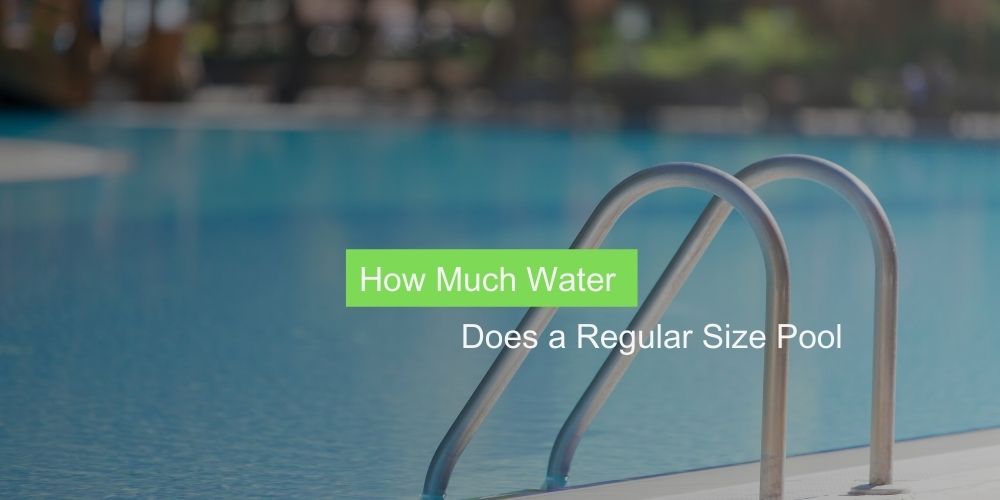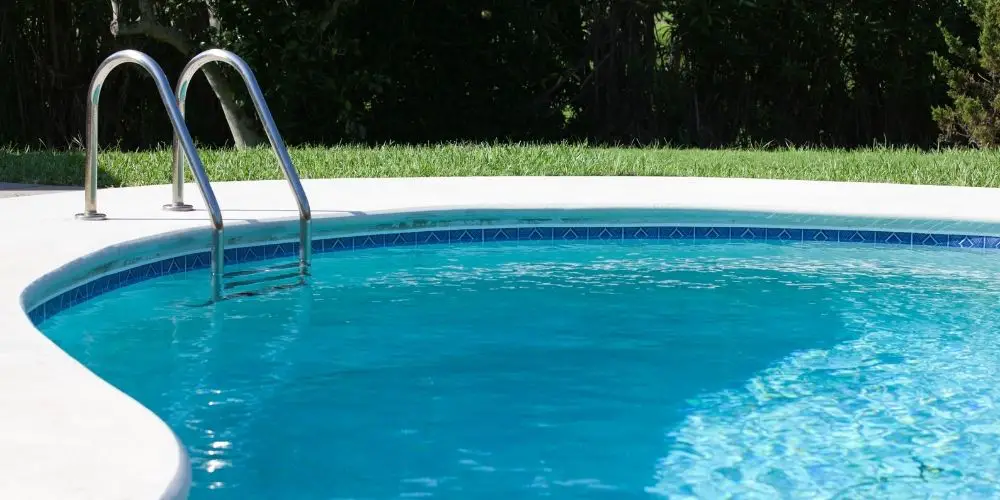
Understanding the water requirements for a regular size pool is essential for every pool owner. It’s not just about maintaining a clean and healthy swimming environment, but also about conserving water and minimizing costs. In this blog post, we will explore the importance of understanding water requirements for a regular size pool. We’ll discuss the benefits of optimal water levels, calculations for pool capacity, considerations when filling a pool, and practical water conservation tips. Whether you’re a new pool owner or a seasoned one, mastering pool water management is crucial for longevity, safety, and efficiency. Let’s dive in and discover how to effectively manage your pool’s water needs.
How Much Water Does a Regular Size Pool?

On average, a regular size pool requires about 15,000 to 30,000 gallons of water to fill. However, the actual amount can vary based on factors such as the pool’s size and depth. Calculating the specific water volume is important for proper maintenance and chemical treatment. Remember to consider the pool’s shape and dimensions when determining the accurate amount of water needed. By understanding the water requirements, you can ensure efficient water management while enjoying a clean and safe swimming environment.
For better understanding…
Determining the Pool Capacity
Understanding the capacity of your pool is essential for effective water management. It allows you to gauge the amount of water needed to fill the pool, adjust chemical treatments, and maintain optimal water levels. Let’s explore the factors that affect pool capacity and the measurements used to quantify it.
Pool Capacity Measurements
Pool capacity is typically measured in gallons or liters. Gallons are the most common unit of measurement in the United States, while liters are widely used internationally. Both measurements provide a standard way to quantify the volume of water a pool can hold. Below, let’s talk about factors affecting pool capacity.
Pool Shape and Size
The shape and size of your pool play a significant role in determining its capacity. Rectangular, circular, oval, and freeform pools all have different volume calculations. Larger pools generally have a higher capacity, as they can hold more water. It’s important to consider the specific dimensions and shape of your pool when determining its capacity accurately.
Pool Depth
The depth of the pool is another critical factor in calculating its capacity. Deeper pools naturally require more water to fill, as they have a greater volume. The depth can vary throughout the pool, with shallow and deep ends, or it can be uniform. Consider the maximum depth of your pool when estimating its capacity.
Water Level
The water level in the pool also affects its capacity. Pools are typically filled to a designated water level, often indicated by markers on the pool wall or skimmer. The capacity is calculated based on the volume of water needed to fill the pool up to that specific water level.
By considering these factors—pool shape and size, depth, and water level—you can accurately determine the capacity of your pool. This knowledge is essential for efficient water management, chemical treatments, and maintaining proper water levels. Understanding your pool’s capacity allows you to plan effectively, conserve water when necessary, and ensure a delightful swimming experience.
Calculating Water Volume: Determining the Capacity of Your Pool
Accurately calculating the water volume of your pool is essential for effective water management. The calculation methods vary based on the shape and dimensions of your pool. Let’s explore three common methods for calculating the water volume: one for rectangular pools, another for circular or oval pools, and a third method for freeform or irregular pools.
Method 1: Formula for Rectangular Pools
Rectangular pools are the most straightforward to calculate. The formula involves determining the length, width, and average depth of the pool.
Determining Length, Width, and Average Depth:
- Measure the length and width of the pool in feet or meters using a tape measure.
- Measure the depth at various points, such as the shallow and deep ends. Take multiple measurements and calculate the average depth by adding them together and dividing by the number of measurements taken.
Calculation Example: Let’s consider a rectangular pool with a length of 30 feet, a width of 15 feet, and an average depth of 5 feet.
- Water Volume = Length × Width × Average Depth × 7.5
- Water Volume = 30 ft × 15 ft × 5 ft × 7.5
- Water Volume = 16,875 gallons
Method 2: Formula for Circular or Oval Pools
For circular or oval pools, the calculation involves measuring the radius or diameter of the pool.
Measuring Radius or Diameter:
- The radius is the distance from the center of the circle to its outer edge.
- The diameter is the distance across the circle through its center.
Calculation Example: Consider a circular pool with a radius of 10 feet and an average depth of 6 feet.
- Water Volume = π (3.14) × Radius (or Diameter)² × Average Depth × 7.5
- Water Volume = 3.14 × 10 ft² × 6 ft × 7.5
- Water Volume = 11,130 gallons
Method 3: Freeform or Irregular Pools
Calculating the water volume for freeform or irregular pools can be more challenging due to their unique shapes. In such cases, approximation techniques are often used.
Approximation Techniques:
- Divide the pool into smaller sections that can be approximated as regular shapes, such as rectangles or circles.
- Calculate the volume of each section individually using the appropriate formulas for those shapes.
- Add up the volumes of all sections to obtain the total water volume.
Importance of Accuracy: While approximation techniques can provide a close estimate of the water volume, it’s essential to strive for accuracy. Consider consulting with a pool professional or utilizing advanced pool volume calculators to ensure precise measurements, especially for irregularly shaped pools.
By using these calculation methods, you can determine the water volume of your pool accurately. This knowledge allows for efficient water management, proper chemical treatment, and optimal maintenance. In the next section, we will discuss considerations when filling a pool, including water sources and quality, to ensure a clean and safe swimming environment.
Considerations for Filling a Pool
Filling a pool is an exciting step towards enjoying refreshing swims and fun times with family and friends. However, there are several important considerations to keep in mind when it comes to filling your pool. In this section, we will explore the different water sources available, water quality and treatment, and the significance of water testing.
Water Sources:
- Tap Water: Common and treated, but be aware of local characteristics.
- Well Water: Untreated; test for impurities.
- Trucked-in Water: Filtered and treated; inquire about source and treatment.
Water Quality and Treatment:
- Disinfectants: Chlorine or alternatives to eliminate bacteria.
- pH Levels: Maintain recommended range (7.2-7.8) for balance.
- Water Testing: Regularly test for pH, disinfectant levels, and more.
By considering water sources, maintaining water quality, and conducting regular testing, you can ensure a clean and safe swimming environment in your pool.

Hi, This is Josh. I am a former competitive swimmer and current fitness enthusiast.
I created this site to share my love of swimming with the world!

